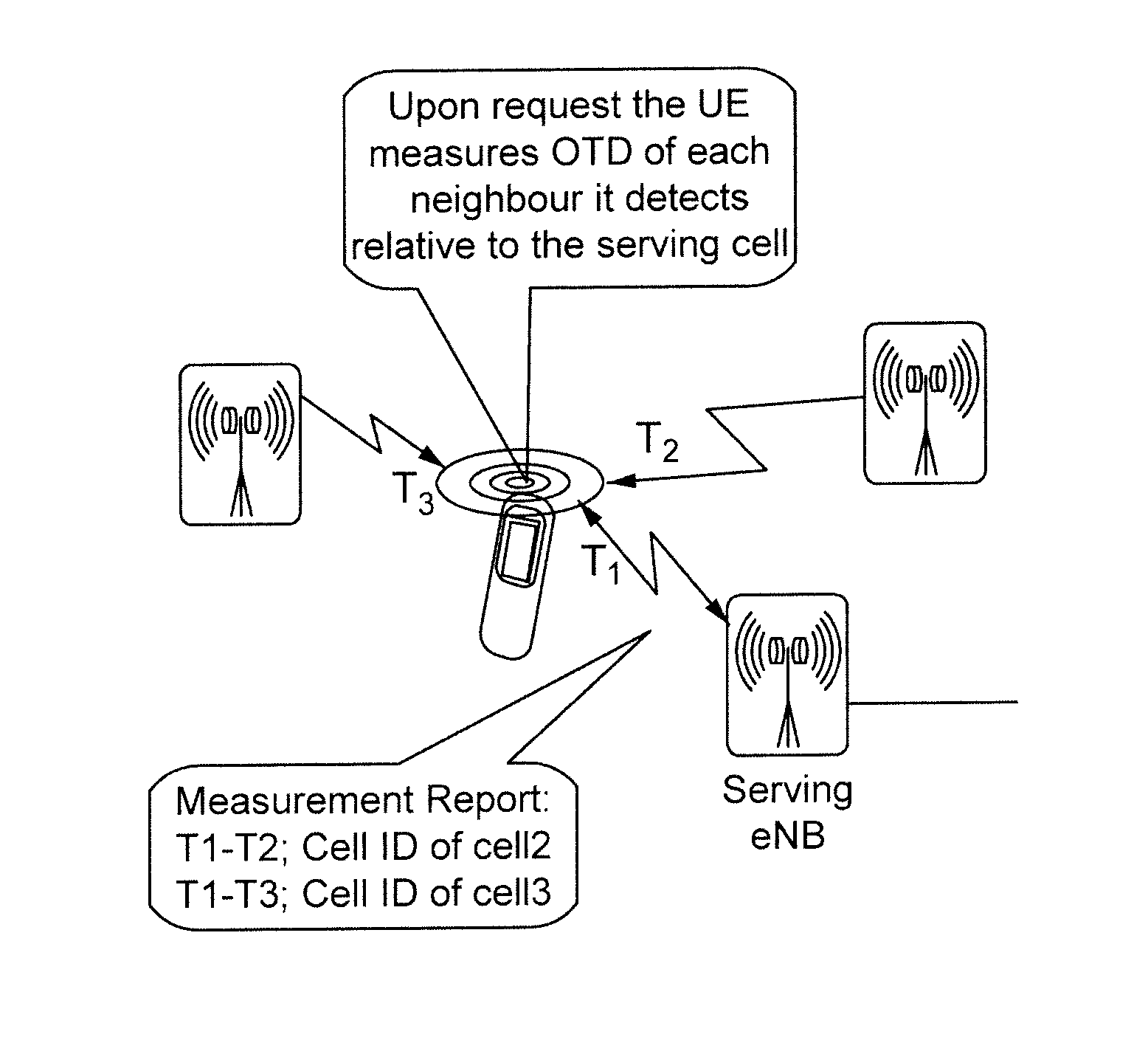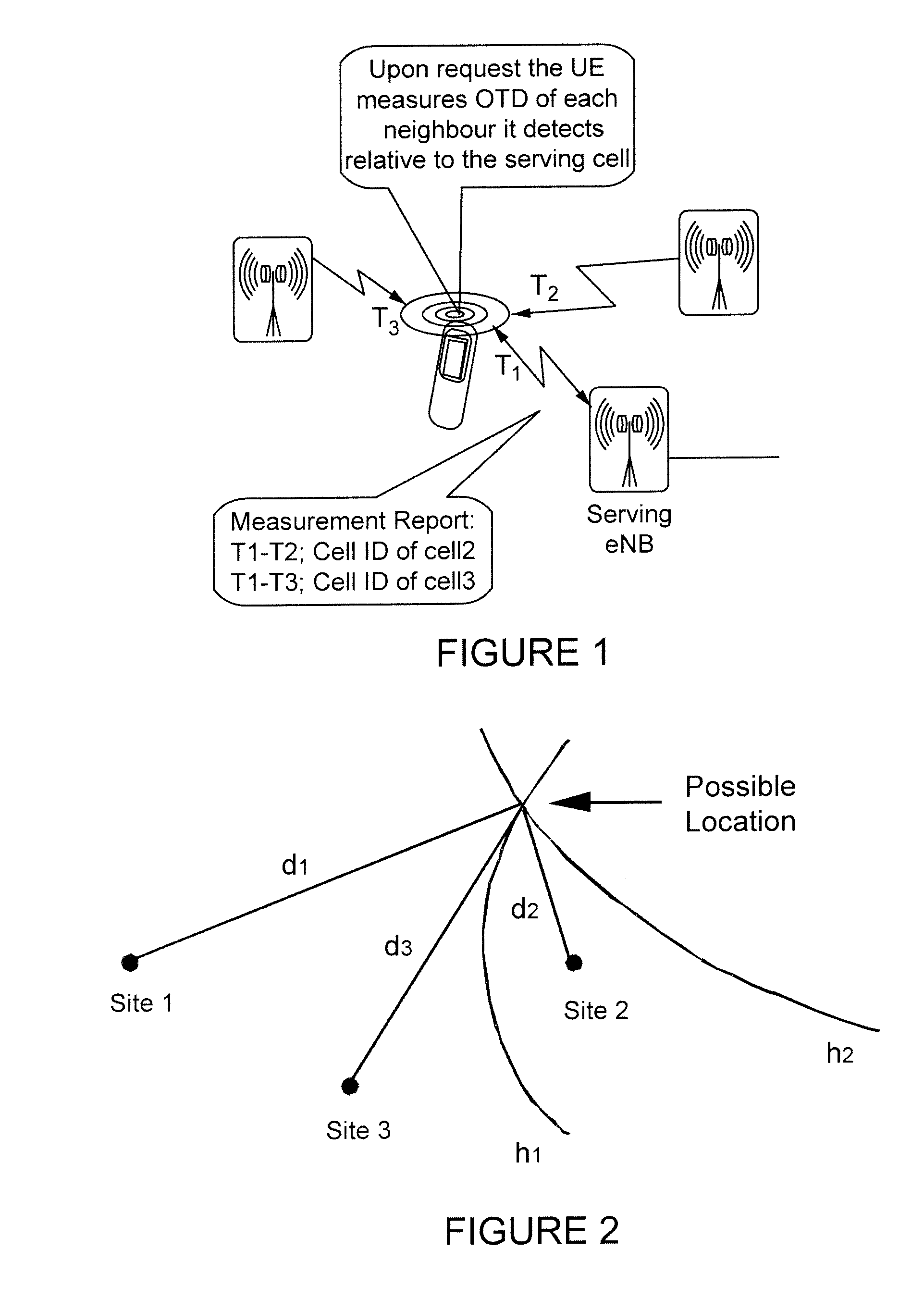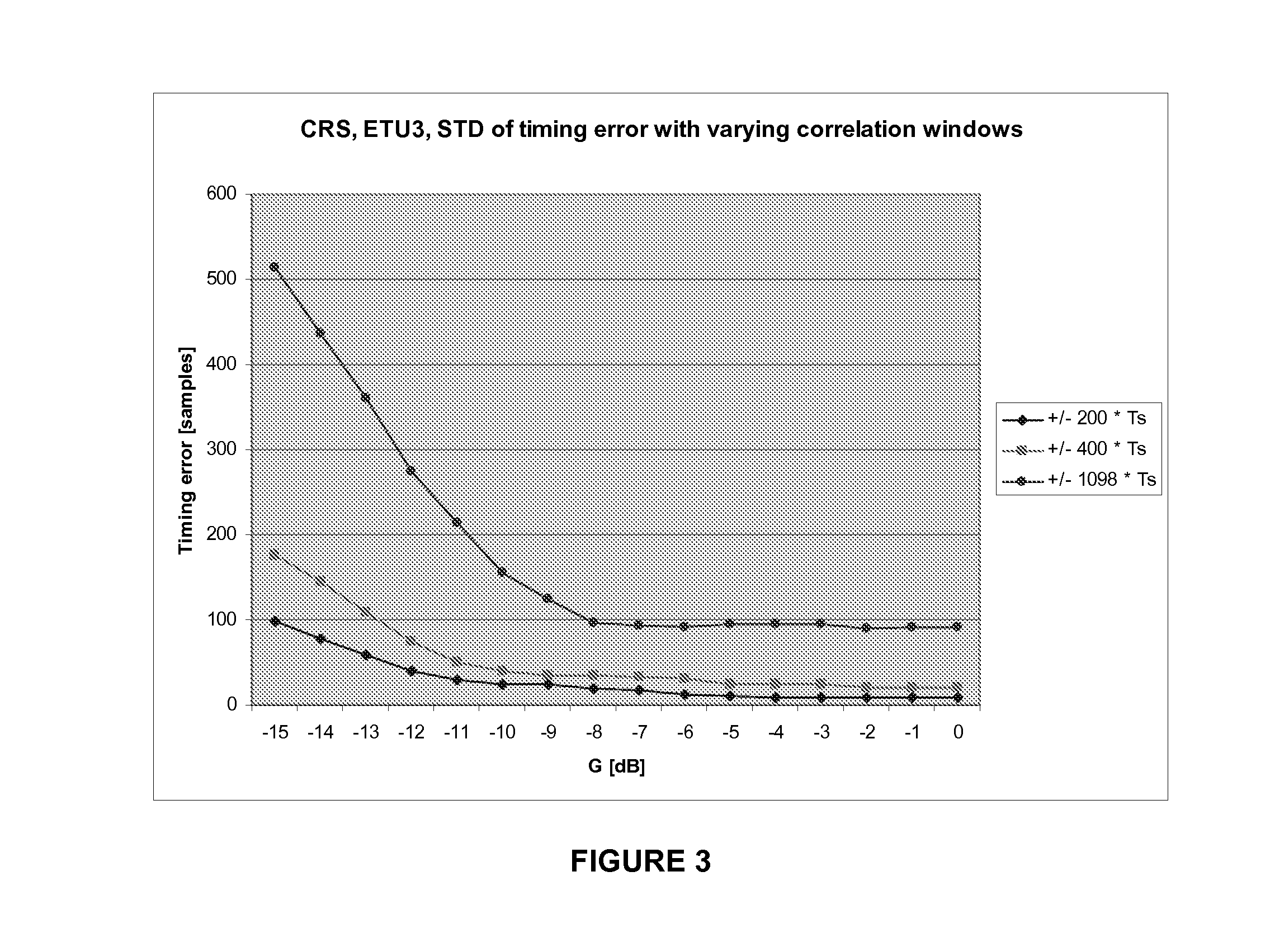Method and apparatus for estimating a position of a node in a communications network
a communication network and node technology, applied in the field of communication networks, can solve the problems of reducing the accuracy of locating the ue in the cellular network, weakening the signal transmitted between the ue and the enb, and significant interferen
- Summary
- Abstract
- Description
- Claims
- Application Information
AI Technical Summary
Benefits of technology
Problems solved by technology
Method used
Image
Examples
examples
[0045]A simulation for various sizes of N was performed to determine the optimum performance with the following parameters and methods:
[0046]PRS, Isolated Cell, G=−15 dB, Case 3, TU3
[0047]Large sliding correlator window, rstdWND=±200×Ts
[0048]Small sliding correlator window, smallRSTD=±30×Ts
[0049]Four methods were performed using n RSTD estimates to define the center of the smallRSTD. 50 RSTD estimates were used per OTDOA measurement period. No threshold was used and RSTD estimates falling outside of the smallRSTD are discarded:
[0050]Method 1→mean of squares with multipath (MP) selection algorithm
[0051]Method 2→mean of squares with MP center of gravity algorithm
[0052]Method 3→mean with MP selection algorithm
[0053]Method 4→mean with MP center of gravity algorithm
[0054]Method 2 provides the best overall results with mean of squares, n=5 RSTD estimates being sufficient for defining the smallRSTD, as illustrated in FIGS. 5 and 6. FIGS. 5 and 6 each illustrate a performance of small windo...
PUM
 Login to View More
Login to View More Abstract
Description
Claims
Application Information
 Login to View More
Login to View More - R&D
- Intellectual Property
- Life Sciences
- Materials
- Tech Scout
- Unparalleled Data Quality
- Higher Quality Content
- 60% Fewer Hallucinations
Browse by: Latest US Patents, China's latest patents, Technical Efficacy Thesaurus, Application Domain, Technology Topic, Popular Technical Reports.
© 2025 PatSnap. All rights reserved.Legal|Privacy policy|Modern Slavery Act Transparency Statement|Sitemap|About US| Contact US: help@patsnap.com



